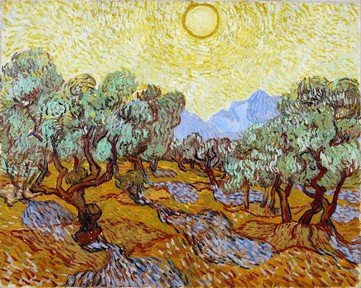Quiz Answer Key and Fun Facts
1. Also known as "La Gioconda", what portrait is known both for its enigmatic smile and for its eyes which seem to follow the viewer around the room?
2. What 1930 painting's somber nature is emphasized by the way dentist Byron McKeeby stares fixedly out at the viewer, pitchfork in hand, instead of looking at the woman beside him?
3. What Goddess' "Birth" is depicted by Botticelli in a painting where she stares at the viewer while being watched and attended to by the winds and one of the seasons?
4. What American painter's most famous work may be one where Christina Olson crawls on her hands and knees, her gaze fixed on a farmhouse far in the distance?
5. What Edouard Manet painting's scandalous (at the time) nature stems in part from how its central nude figure looks directly at the viewer?
6. What Jacques-Louis David painting features three helmeted triplets gazing at their own swords in the hands of their father?
7. What painter is known for works like "The Astronomer", "The Geographer", "The Milkmaid", and "Woman Holding a Balance", depicting people gazing at and absorbed in their labors?
8. What title animal of a John Singleton Copley painting is given eyes that are (incorrectly) portrayed as being hazel instead of solid black, and facing forward instead of at the side of the head?
9. What lies at the center of the title object in M.C. Escher's 1946 print "Eye"?
10. What 16-foot-tall Michelangelo statue was investigated by a computer scientist and found to have eyes pointing in different directions?
Source: Author
kevinatilusa
This quiz was reviewed by FunTrivia editor
CellarDoor before going online.
Any errors found in FunTrivia content are routinely corrected through our feedback system.

